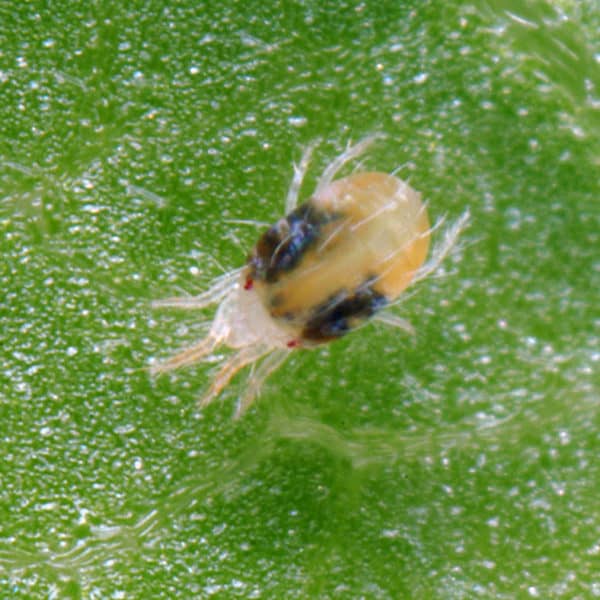
Two Spotted Mite
Two Spotted Mite (Tetranychus urticae) larve hatches from the egg has six legs, is pale yellowish-white, oval and minute. The larva moults to become an eight-legged nymph, which becomes the mature mite after two further moults.
The adult female is about 0.5 mm long and the adult male is about 0.3 mm long. In the summer feeding stage the adult females are a yellowish-green, with two obvious dark spots, one on each side of the body. In males these spots are less conspicuous. Both sexes possess two reddish eyespots. Only adult females overwinter, after changing to the orange-red, non-feeding stage.
Both nymphs and adults damage plant foliage by piercing the cells and sucking the contents, collapsing the cells killing the leaf. The mite is a spins webs in its active stages. Populated leaves become pallid and may become bronzed and shrivelled. The mites are more damaging in hot, dry weather with shorter life which can be in just over a week. Lawn near dust sources such as dirt roads are particularly susceptible to mite attack.
The mites leave their hibernating sites from winter and lose their red colour as they start to feed. The females lay up to six eggs a day and usually lay a total of 70 or more. Hatching occurs three to 10 days later, depending on the temperature.
The use of miticde greatly reduces the number and effectiveness of beneficial insects, plus mite populations have developed varying degrees of resistance to several miticides. If chemical control is required, careful selection of a miticide is important. There are several effective miticides available but they can be poisonous.
Accurate turf identification is vitally important in choosing the best lawn care products to control mites.
